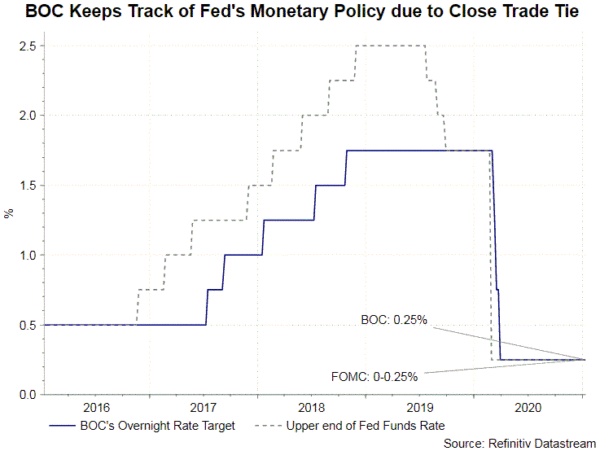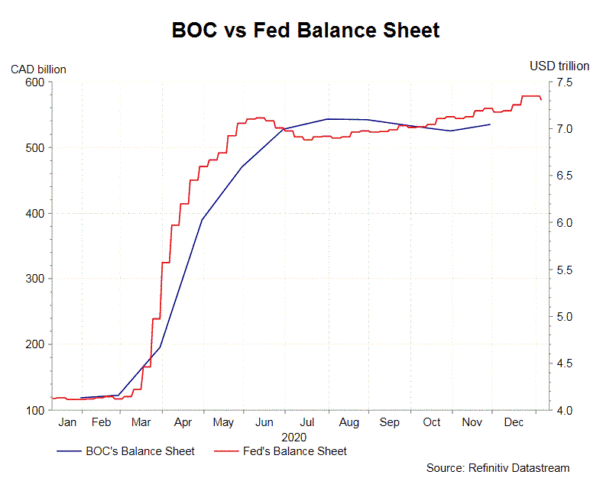Similar to Australian dollar, Canadian dollar this year should continue to benefit from broad-based USD weakness, global recovery, and rebound in commodity, in particular crude oil, prices. However, with the US as its largest trading partner, BOC should track the Fed’s monetary policy closely, and avoid excessive appreciation of CAD against USD. This could limit loonie’s gain when compared with other commodity currencies.
While Australian dollar are positively correlated iron ore price, the movement of Canadian dollar is closely linked to that of crude oil price. The country is the 4th largest producer and third largest exporter of oil in the world, with 98% of its oil exports going to the US. Indeed, weakness of crude oil last year had also triggered selloff in CAD. The theme of global economic recovery and improved risk appetite this year should be positive for crude oil. However, OPEC+ compliance may add uncertainty. A survey by Petro-Logistics shows that the compliance level of the alliance plunged to 75% in December, the lowest since May 2020. Saudi Arabia, the most committed member to output cut, saw its compliance drop 10 ppts to 92%. Russia, world’s third largest oil producer after the US and Saudi, saw compliance down 8 ppts to 64%. Other surveys, such as S&P Platts and Reuters, also estimated lower compliance in December, although the level remained close to 100%.
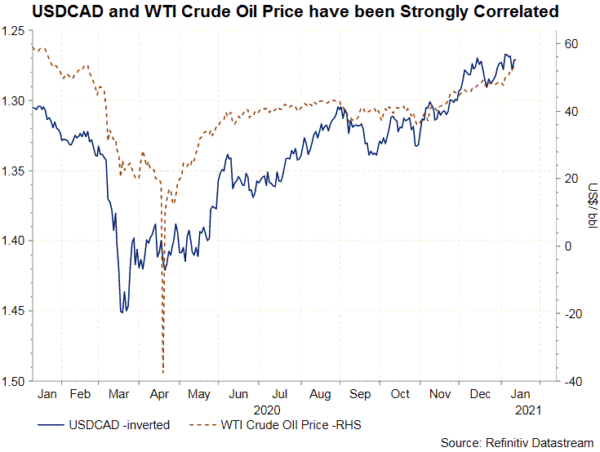 Fed’s commitment to QE infinity in March and the shift to average inflation targeting have sent US’ Treasury yields below its counterparts. The greenback has lost much appeal with the loss of yield advantage. The chart below shows that US/Canada 2-year yield spread has been trading in negative since December 2019 and widened last year. Historically, USDCAD’s movement was very much directed by yield differential. However, this correlation has obviously lost to crude oil price. The downside risk to USDCAD is significant if this correlation to pick up this year.
Fed’s commitment to QE infinity in March and the shift to average inflation targeting have sent US’ Treasury yields below its counterparts. The greenback has lost much appeal with the loss of yield advantage. The chart below shows that US/Canada 2-year yield spread has been trading in negative since December 2019 and widened last year. Historically, USDCAD’s movement was very much directed by yield differential. However, this correlation has obviously lost to crude oil price. The downside risk to USDCAD is significant if this correlation to pick up this year.
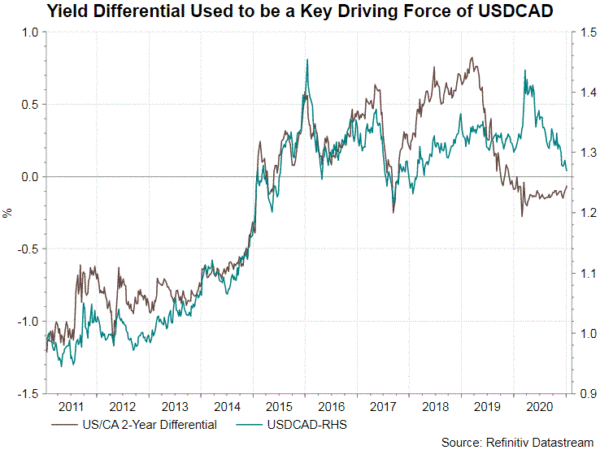
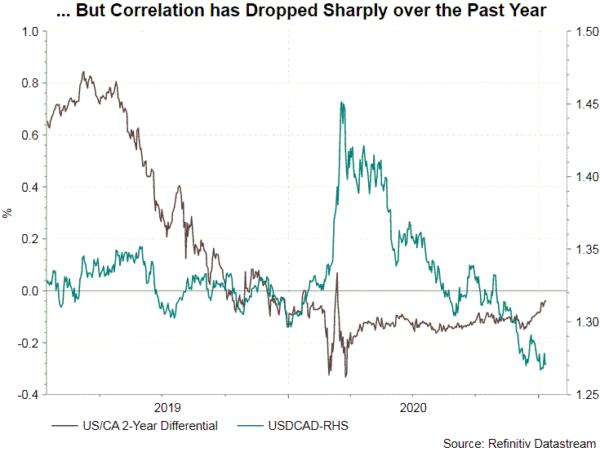 However, the close trade relations between the US and Canada suggest that BOC would not want to see “excessive” appreciation in the loonie. Indeed, history shows that BOC’s monetary policy has been closely tracking the Fed’s. For instance, after the announced an emergency rate cut of -50 bps on March 3, 2020, the BOC followed suit and lowered its policy rate also by -50 bps. On March 16, Fed aggressively cut the policy rate, by -100 bps, to a range of 0-0.25% in another emergency meeting. The BOC then announced rate cuts of -50 bps on March 16 and March 27, bringing its policy rate to 0.25%. Concerning QE, BOC’ s balance sheet expansion is no less aggressive than that of the Fed, despite the smaller size.
However, the close trade relations between the US and Canada suggest that BOC would not want to see “excessive” appreciation in the loonie. Indeed, history shows that BOC’s monetary policy has been closely tracking the Fed’s. For instance, after the announced an emergency rate cut of -50 bps on March 3, 2020, the BOC followed suit and lowered its policy rate also by -50 bps. On March 16, Fed aggressively cut the policy rate, by -100 bps, to a range of 0-0.25% in another emergency meeting. The BOC then announced rate cuts of -50 bps on March 16 and March 27, bringing its policy rate to 0.25%. Concerning QE, BOC’ s balance sheet expansion is no less aggressive than that of the Fed, despite the smaller size.
